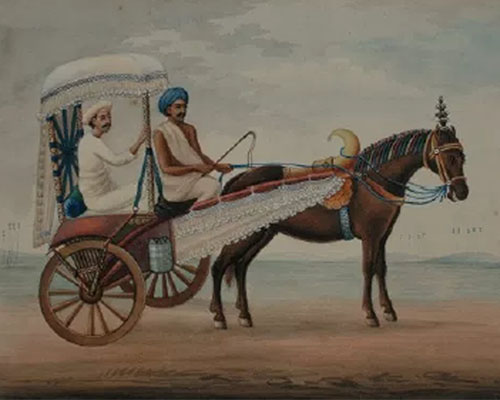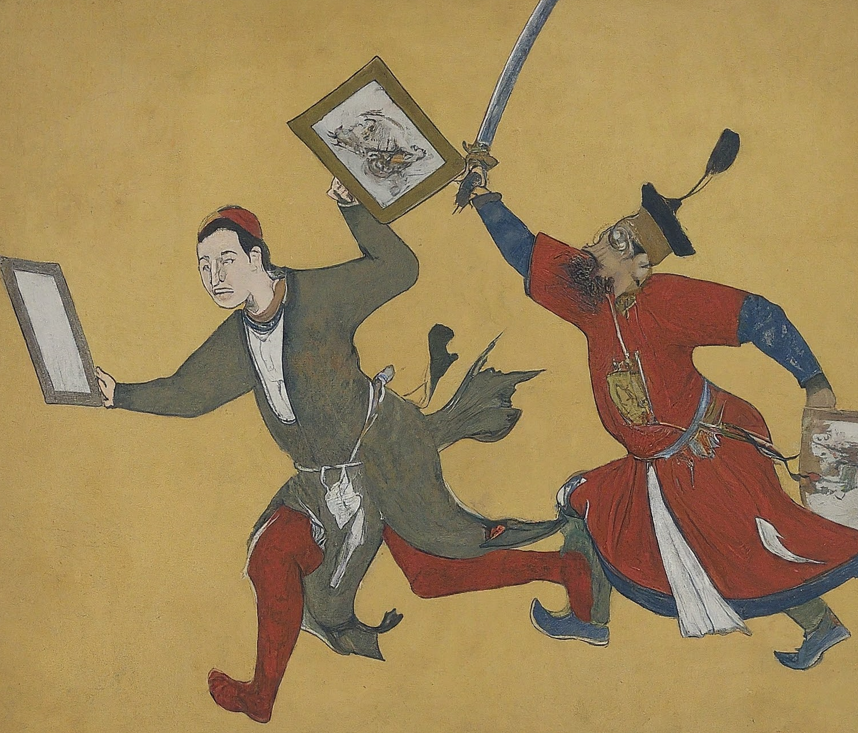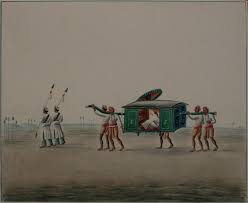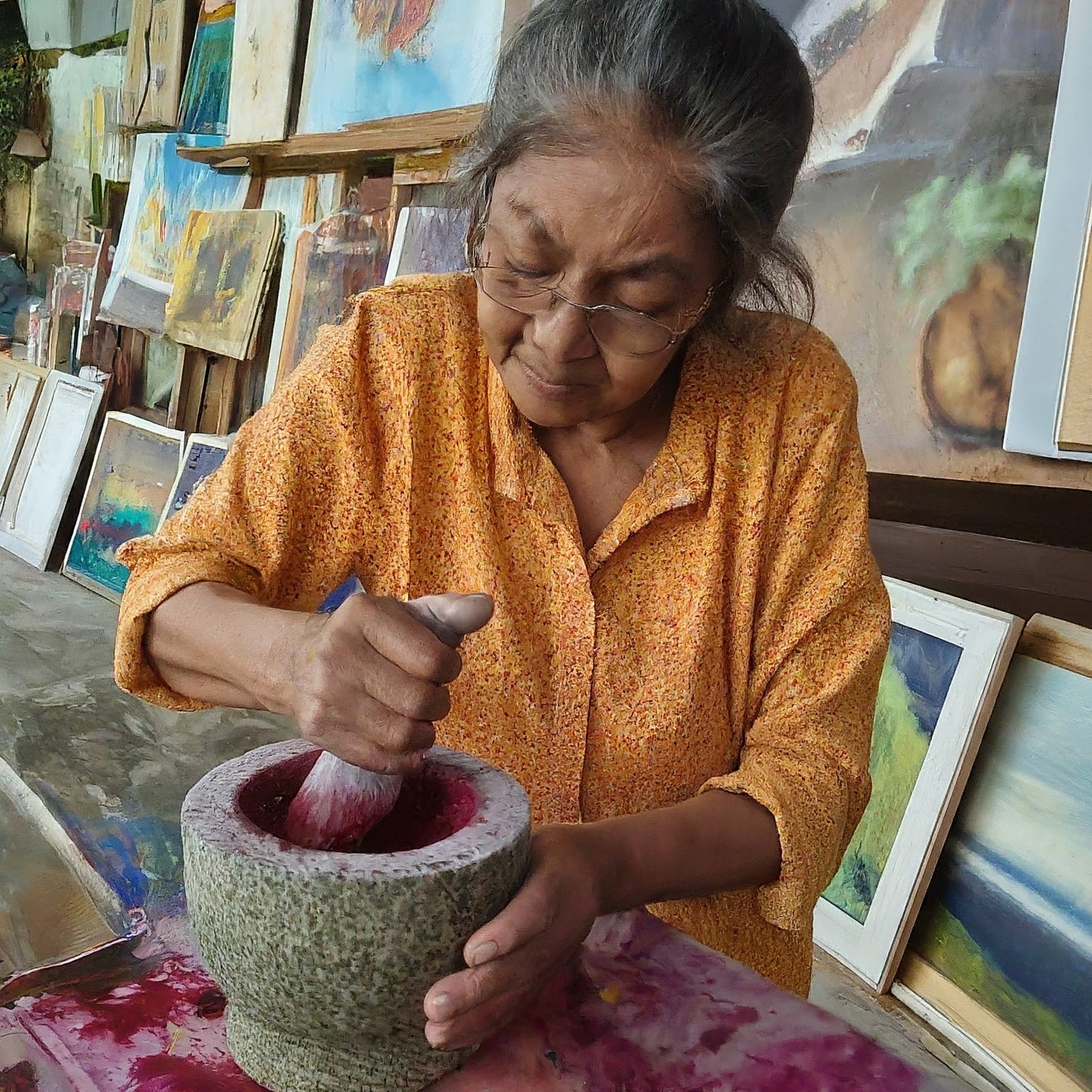Patna Kalam Painting is a unique style of Indian miniature painting that originated in the city of Patna, Bihar, in the 18th century. The art form is characterized by the bold use of colors, intricate detailing, and unique themes that reflect the cultural and social life of the region. Patna Kalam paintings are a beautiful representation of the amalgamation of Mughal and local Indian artistic traditions.
Patna Kalam Painting
| Art | Theme | Origin |
|---|---|---|
| Miniature | Social Life | Mughal School |

Table of Contents
Origin of Patna Kalam Painting
The origins of Patna Kalam paintings can be traced back to the Mughal School of painting, which was popular in the 16th and 17th centuries. However, the Patna Kalam style evolved to have its own distinct identity, with a focus on more vibrant and contrasting colors, and a more intricate and detailed style of painting. The Patna Kalam style was heavily influenced by the local artistic traditions of Bihar.
The artists of this painting were originally flourishing under the shadow of the Mughal empire, as Aurangzeb ascended to the throne, he started prosecuting these artists as he was against the promotion of art and culture. Feared by such treatments, these artists fled to Murshidabad in Bengal. However, due to economic hardship in the Bengal region, they moved to Patna.

Characteristics of Patna Kalam Painting
- Patna Kalam Painting is a style of Indian miniature painting that originated in the city of Patna, Bihar, in the 18th century.
- It is characterized by its use of bright, vibrant colors, intricate designs, and finely detailed brushwork.
- The paintings typically depict scenes from Hindu mythology, such as the life of Krishna or the Ramayana, as well as scenes from daily life in 18th-century Patna.
- Patna Kalam paintings are often done on small pieces of paper, and the figures are rendered in a flat, two-dimensional style.
- The paintings were made using free hand without any border, and strong, contrasting colors, which give the paintings a vivid, eye-catching quality.
- The use of natural dyes, such as indigo, pomegranate rind, and turmeric, is another characteristic of Patna Kalam paintings, which gives them a unique and vibrant appearance.
Themes of Patna Qulam Paintings
The themes of Patna Kalam paintings are primarily centered around Hindu mythology, as well as the daily life of the people of Patna and the surrounding areas. The paintings feature depictions of gods and goddesses, scenes from the Ramayana and Mahabharata, as well as folk tales and legends. The everyday life of people is also a popular subject, such as farmers at work, women carrying water from the river, and traders on the streets of Patna.

"Patna Kalam Painting depicts solcial activities like Fishing, Riding etc."
Artists of Patna Kalam Paintings
The artists who practiced the Patna Kalam style were known as “Karkhanedar” and were skilled in various techniques such as drawing, coloring, and miniature painting. The paintings were made using natural materials, such as brushes made of animal hair and paper made from mulberry pulp. The artists used a technique called “badla” which involves creating raised patterns on the painting by applying a layer of white pigment mixed with gum arabic. The raised patterns were then painted over with natural dyes to create a beautiful effect.

Famous artists of Patna Kalam Painting
- Bhawani Das: He is considered one of the pioneers of Patna Kalam Painting. He was active in the 18th century and is known for his depictions of Hindu deities, particularly Krishna.
- Manohar: He was another prominent artist of the 18th century and is known for his intricate designs and use of metallic pigments in his paintings.
- Mahesh Das: He was an artist in the early 20th century and is known for his innovative use of color and his depictions of rural life in Bihar.
- Shanti Devi: She is a contemporary artist who has played a key role in the revival of Patna Kalam Painting. She has won several awards for her work and has exhibited her paintings both in India and abroad.
- Amitabh Kumar: He is another contemporary artist who has contributed to the revival of the art form. He has experimented with new techniques and styles while staying true to the traditional themes and motifs of Patna Kalam Painting.
Patronage of the Art
The Patna Kalam style reached its peak during the reign of the last Nawab of Bihar, Mir Qasim, who was a patron of the arts and encouraged the development of local arts and crafts. The Nawab himself was a skilled painter and was known to have commissioned many Patna Kalam paintings. The patronage of the Nawab and his court led to the development of a vibrant artistic community in Patna, which produced some of the most beautiful Patna Kalam paintings.
Decline and Revival
The art started declining after the departure of the Britishers from India. The artists were left without a reliable source of income. Moreover, the advent of photography and printing technologies in the 19th century made it easier and cheaper to produce images, further reducing the demand for traditional hand-painted art.
In the 20th century, Patna Kalam Paintings faced further challenges due to the growing popularity of modern art forms, which led to a decline in the number of artists practicing the art form. The partition of India in 1947 also had a significant impact on the art form, as many artists migrated to Pakistan, leaving behind a void in the art community.
"After Indian Independence, the artists of Patna Kalam Painting were left without a reliable source of income, leading to further decay of the art."
However, efforts have been made in recent years to revive Patna Kalam Paintings. The revival started in the 1960s with the establishment of the College of Arts and Crafts in Patna, which provided a platform for the training and promotion of traditional arts, including Patna Kalam Paintings. The college also organized exhibitions and workshops to showcase the art form to a wider audience.
Today, a small but dedicated group of artists continue to practice Patna Kalam Paintings, keeping the tradition alive. The art form has gained recognition and appreciation from art enthusiasts in India and abroad, and efforts are being made to ensure its preservation and continued growth. Some artists have also adapted the style to create contemporary works that incorporate modern themes and techniques, attracting a new generation of art enthusiasts to the traditional art form.
Comparison of Patna Kalam Painting and Mughal Painting
| Criteria | Patna Kalam Painting | Mughal Painting |
|---|---|---|
| Origin | Patna, Bihar | Mughal Empire |
| Time Period | 17th-19th century | 16th-19th century |
| Style | Folk and rural | Courtly and refined |
| Subject Matter | Mostly religious and mythological themes | Diverse themes such as court scenes, portraits, hunting scenes, etc. |
| Colors | Bright and vibrant | Soft and pastel |
| Techniques | Bold and flat brushwork, use of vegetable colors | Fine brushwork, use of gold and other precious materials |
| Influences | Mughal and Rajput styles | Persian and Indian styles |
| Artists | Mostly anonymous and untrained | Highly skilled court artists |
| Audience | Common people and local rulers | Mughal court and elite patrons |
| Legacy | Maintained a strong regional identity | Had a significant impact on the development of Indian miniature painting |
BPSC Syllabus on Patna Kalam
BPSC Mains syllabus directly mentions the term ‘Patna Qulam’. Therefore, it is extremely important to prepare the topic properly.
Syllabus: “A knowledge of the chief features of Mauryan and Pal art and Patna Qulam painting will be expected from the examinees.
BPSC Mains Question
Q. Bring out the Salient Features of Patna Kalam Painting. (BPSC 66th Exam, 2021)
Q. Examine the Salient Features of Patna Qulam painting. (BPSC 63rd Exam, 2019)
Q. Bring out the main Features of Patna Qulam Painting. (BPSC 56 to 59 Exam, 2016)
Q. Discuss the Salient Features of Patna Kalam Painting. (BPSC 48 to 52 Exam, 2009)